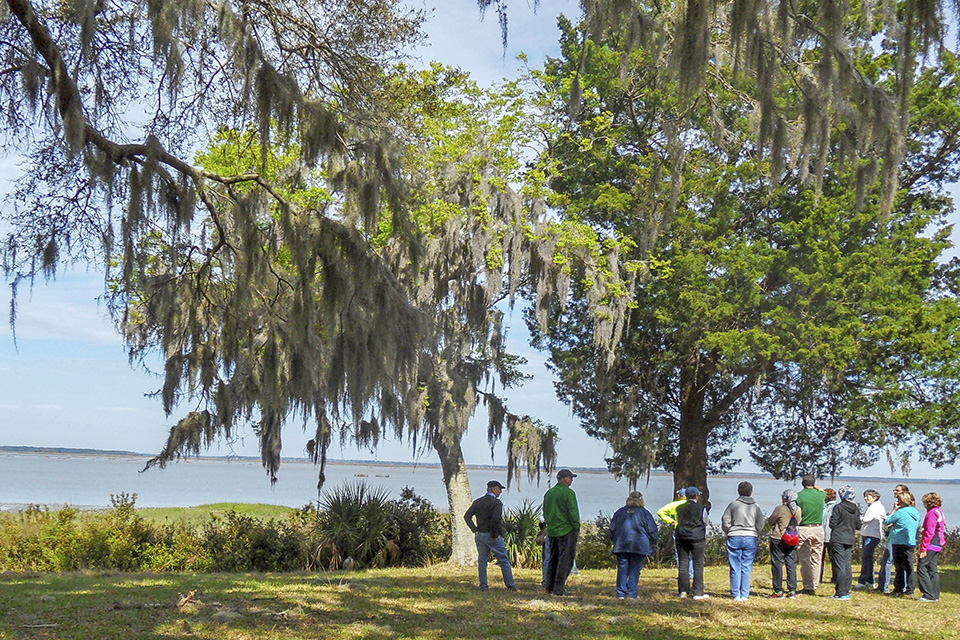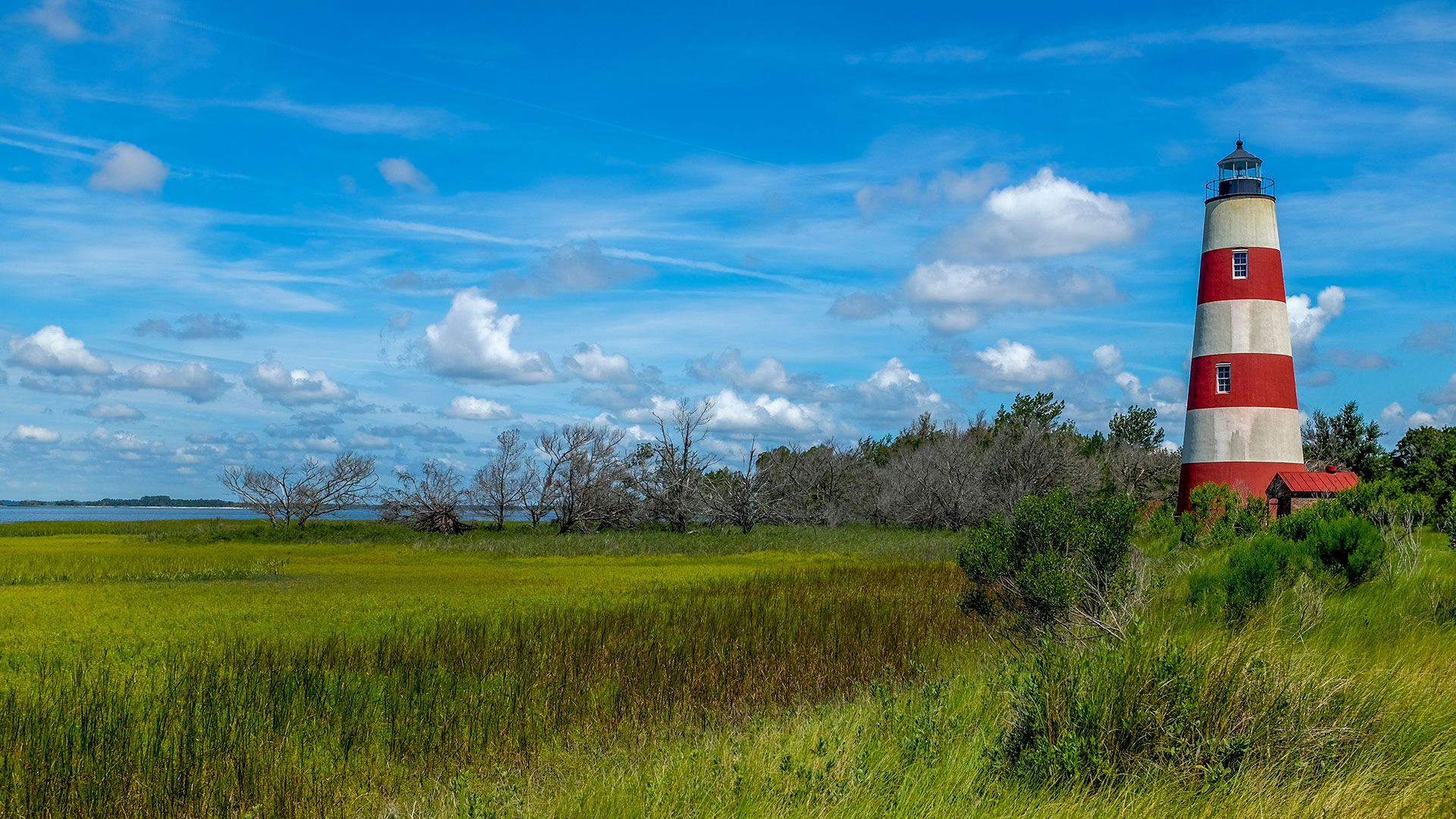The small community of Hog Hammock on Georgia’s Sapelo Island survives as a testament to the layered histories of ecology and enslavement that characterized life on many of the Sea Islands along the U.S. Atlantic coast. Descended from enslaved peoples, the island’s last Saltwater Geechee community is the product of a creolization of African, Native American, and European influences amalgamated into a distinctly new culture that has shaped cultural lifeways along the southeastern coast for more than 200 years. But today, new coastal development and the skyrocketing taxes it brings threaten to erase the traditional economy of farming, fishing, and hunting, along with the vernacular landscapes that bear witness to a unique piece of American history.
History
With its ideal climate, sandy soils, and wetlands perfect for growing rice, cotton, and sugarcane, Sapelo, an island just off the Georgia coast, was drawn into agrarian capitalism, first by the French and later, the British. Following the American Revolution, the island proved an ideal site for the cultivation of rice and long-staple (Sea Island) cotton. The Geechee who inhabit Sapelo today are descendants of enslaved West African farmers brought in bondage from modern-day Sierra Leone, Liberia, Benin and Guinea, known for their skills in tidewater cultivation perfected over a millennium.
Sapelo soon developed into an antebellum plantation empire under the control of Thomas Spalding, who had acquired virtually the entire island by 1843. A prosperous planter on the tidewater, Spalding was an agricultural innovator, politician, and amateur architect who reintroduced the use of tabby shell-stucco as a primary building material along the Georgia coast. Sapelo’s ruins at the old settlements of Chocolate, High Point, Long Tabby, and other locations are reminders of his agricultural success, as well as the harsh working conditions faced by the hundreds of people whom he brought there in captivity to realize that success. Captain Basil Hall, an English travel writer, observed in 1828 that the growing of rice in the region was…
“the most unhealthy work in which the slaves were employed, and that in spite of every care, they sank under it in great numbers. The causes of this dreadful mortality are the constant moisture and heat of the atmosphere, together with the alternating flooding and drying of the fields on which the Negroes [sic] are perpetually at work, often ankle deep in mud, with their bare heads exposed to the fierce rays of the sun.”
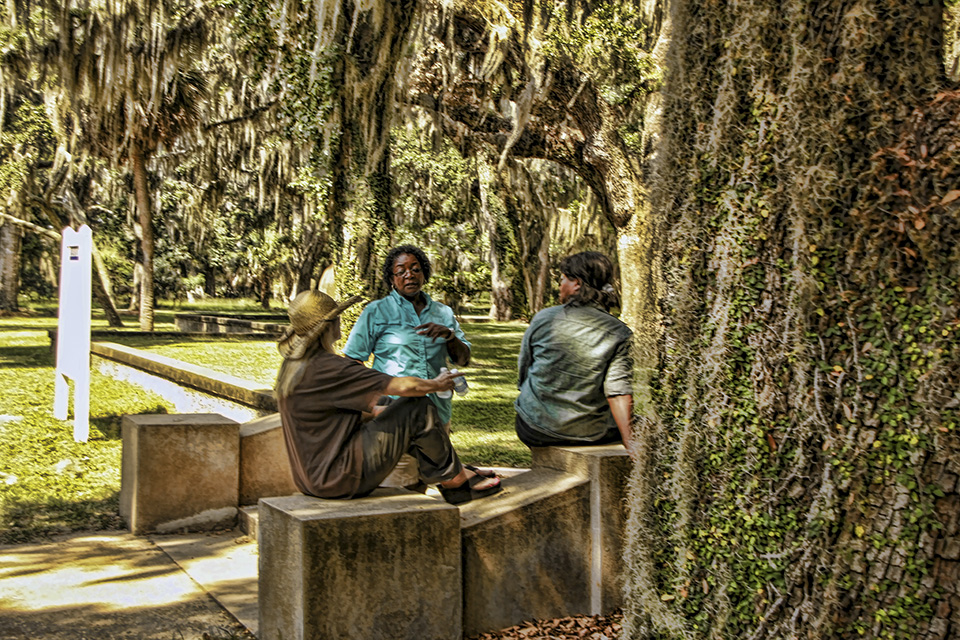 Residents of Hog Hammock, Sapelo Island, GA, photo by Evangelio Gonzalez, courtesy Creative Commons, 2017.
Residents of Hog Hammock, Sapelo Island, GA, photo by Evangelio Gonzalez, courtesy Creative Commons, 2017.
The Making of Geechee Culture
Despite these conditions, several factors aided the enslaved population in their efforts to retain important elements of their culture. Those living on the Sea Island plantations were relatively isolated from inland communities. Moreover, the plantations were worked under what was known as the task system of agriculture, which allowed the enslaved laborers some spare time to produce and barter for wares, practice their own religion, and develop a thriving communal agriculture heavily dependent on the surrounding landscape. The relative isolation also meant that the Geechee culture itself became characterized by a complex web of kinship and belonging.
Such isolation resulted not only in a strong Geechee culture, but also in an unusually close connection to the landscape. Around 1802, Spalding purchased a slave named Bilali Muhammed, who was a skilled rice cultivator from an African Muslim family. The degree to which Spalding valued Bilali is further attested by the fact that he also purchased the man’s wife and children, who were also sent to Sapelo. Directed to manage hundreds of slaves on the plantation, Bilali oversaw the transformation of a largely wild island into a 17,000-acre plantation. He also left behind a remarkable journal written in pidgin Arabic and known as the “Bilali Muhammad Document,” which is thought to be the first Islamic text written in America. Islamic traditions mixed with those of Baptist Christianity and West African practices added to the distinctive cultural identity on Sapelo Island.
40 Acres and a Mule
Beginning in 1870, freedmen of the former antebellum Sapelo plantation gradually began to purchase land, transforming the slave settlements into thriving communities. Between 1865 and 1912, nearly 400 former slaves and their descendants had settled at least thirteen communities around the island. The largest of these were Raccoon Bluff and Belle Marsh on the north end, Lumber Landing in the central uplands, and Hog Hammock (originally called Hog Hummock) and Shell Hammock on the south end. The First African Baptist Church was organized in 1866 at Hanging Bull, eventually moving to Raccoon Bluff, which was also the site of the island’s school. Sapelo’s African American communities engaged in subsistence agriculture, timbering, and oyster harvesting in the Duplin River estuary, gradually occupying virtually every section of the barrier island. The 1930 federal census identified 345 African American residents there, dispersed among 75 households.
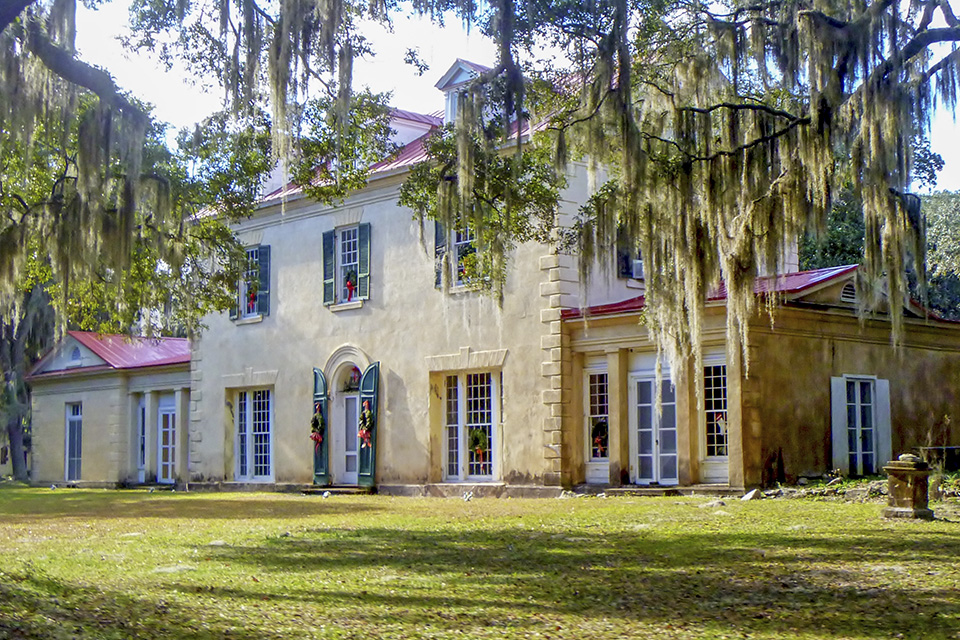 Thomas Spalding's Ashantilly Manor, Darien, GA, photo courtesy Creative Commons, 2017.
Thomas Spalding's Ashantilly Manor, Darien, GA, photo courtesy Creative Commons, 2017.
In 1934 tobacco heir R.J. Reynolds, Jr., purchased much of the island from Howard Coffin, one of the founders of the Hudson Motor Car Company, who had acquired nearly all of Sapelo with the exception of the privately owned Geechee communities. Reynolds instantly became the largest landholder on the island (only the communities of Hog Hammock, Raccoon Bluff, Belle Marsh, Lumber Landing, Shell Hammock, and Behavior Cemetery were excluded from the transaction), and with most of the island’s residents working for him, he was able to consolidate the communities. Reynolds intended to transform everything north of South End into a wildlife and hunting preserve, the consolidated tracts today constituting the Sapelo Island National Estuarine Research Reserve. By the time of Reynolds’ death in the early 1960s and his widow’s subsequent sale of the island to the State of Georgia (which now owns 98 percent of the land on Sapelo), Hog Hammock was all that remained of the Geechee communities.
Acquired by freedmen via deed of gift from Spalding in the 1870s, Hog Hammock has remained a stronghold of Geechee culture to the present day and is now a 434-acre historic district (listed in the National Register of Historic Places in 1996). The community is bounded by marshland on the east and southeast, a road to the west, and an irrigation canal to the north. The 50 houses scattered throughout the community speak to the changing occupancy patterns on Sapelo, where the linear rows of slave quarters gave way to a more organic layout that reflects the dependence on communal relationships. The historic wood-frame, one-story houses often feature a gable roof and front porch.
Unfortunately, decades of displacement have increased the vulnerability of the community’s survival. The prevalent land-ownership pattern among the Geechee is known as heirs property, in which land has been passed down through successive generations, largely without clear title or proper legal documents, with every heir having a right to use and possess the property. Originating in both African traditions and the system of land distribution after the Civil War, the Geechee concept of land ownership is both complex and radically different from that found elsewhere. This difference is perhaps most evident in the access to common areas, such as the surrounding marshes and ocean, which is considered a communal right that cannot be denied by waterfront housing or development. The legally precarious nature of heirs property also means that the Geechee face an increased risk of forced sale and eviction and can encounter special difficulties acquiring a mortgage or participating in government programs. And although Congress officially established a Gullah-Geechee Cultural Heritage Corridor in 2006 (extending from Wilmington, North Carolina, to Jacksonville, Florida), the corridor is neither a National Park Service unit nor federally managed land, and it therefore does not afford protection to the Geechee from an influx of private development that often takes advantage of the unique strictures of heirs property.
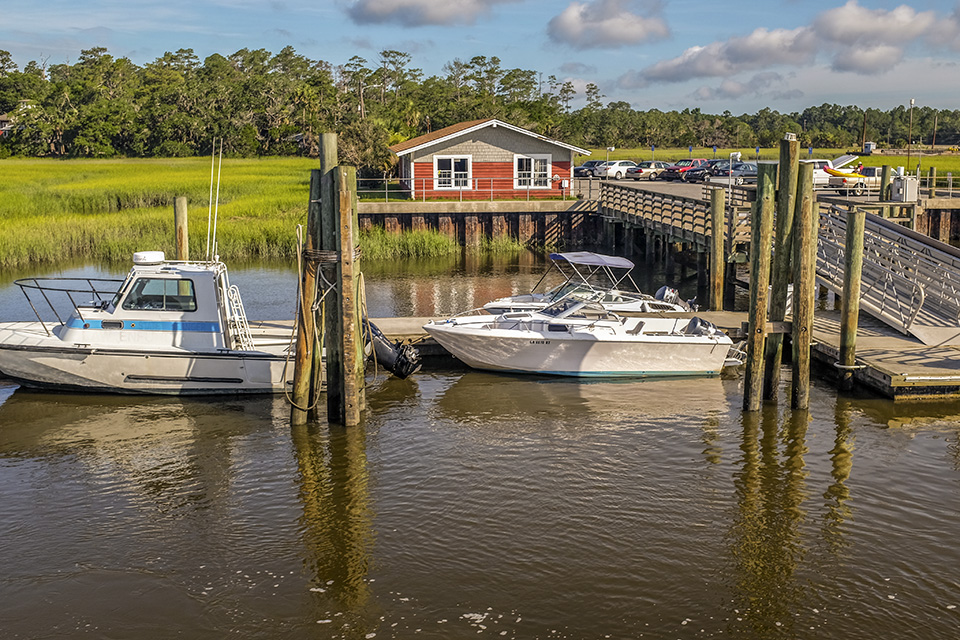
Threat
Sapelo had nearly 500 Geechee residents when Cornelia Walker Bailey was born into the community in 1945. By the early 21st century, it had fewer than 50, and today there are fewer than 30 Geechee resident on the island. The change, she wrote in her 2001 book, God, Dr. Buzzard, and the Bolito Man, came because “the outside world began crashing in.” The lack of recognition regarding heirs property rights, pressures exerted by tourism, holiday homes, and development are proving to be overwhelming. In the 1990s, people from the mainland began acquiring parcels of land to construct large vacation homes, and the municipal government continues to regard Sapelo’s coastal real estate as a potential economic boon. In 2012–2013 McIntosh County property tax appraisers notified Hog Hammock residents of huge property-tax increases—as much as 1,000 percent in some cases—even though there is no school (which closed in 1978), police force, ambulance service, or fire department on the island. The arrival of a succession of catastrophic hurricanes, including Irma and Florence, and the flooding in their wake have also exposed the vulnerability of the community. This pattern has been repeated on many of the Sea Islands, where condos, vacation communities, golf courses, and resorts have already largely replaced Gullah-Geechee communities.
For Bailey, a descendant of Bilali Muhammed, these looming existential threats were a clarion call to action. She and her community formed the non-profit Sapelo Island Cultural and Revitalization Society to preserve their past and shape their future, raised money to help pay skyrocketing tax assessments on Hog Hammock homes, and filed lawsuits over taxation and access to resources. Bailey, a vivid storyteller and historian, became a published author, a spokesperson in documentaries, and the subject of national and international news stories and magazine features. But with her death in 2017, the Hog Hammock community on Sapelo, and the larger Gullah-Geechee community, lost its greatest spokesperson and knowledge-keeper.
What You Can Do to Help
The unique Geechee community on Sapelo Island is the last such community of its kind, and a number of organizations are working to ensure that its significant history and cultural landscapes do not disappear forever. Visit the website of the non-profit Sapelo Island Cultural and Revitalization Society to learn more about Sapelo Island’s unique Geechee culture. As the number of Geechee descendants on the island falls precipitously, historians and stewards are racing to record the stories of Sapelo and introduce them to a wider, younger audience, a mission that took on even greater urgency with the death of Cornelia Bailey. Support the work of the Georgia Virtual History Project, which is dedicated to developing ways for Sapelo’s people to share their stories with students. Also vital is the work of the Gullah Geechee Cultural Heritage Corridor Commission, a non-profit organization dedicated to protecting and preserving Gullah-Geechee heritage sites, including Sapelo Island’s Hog Hammock community.
